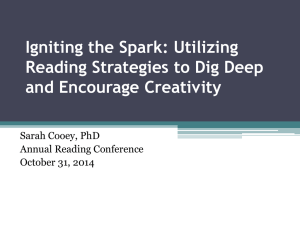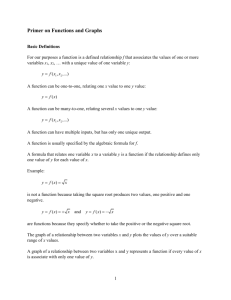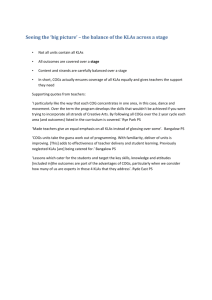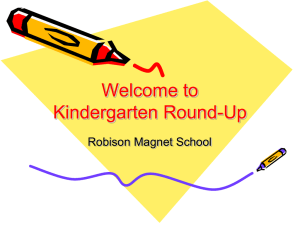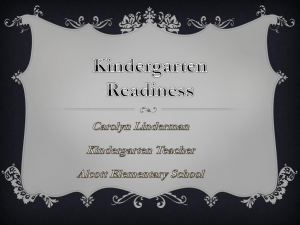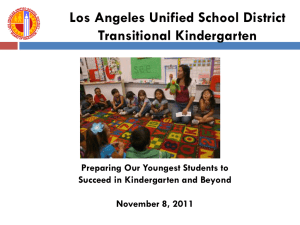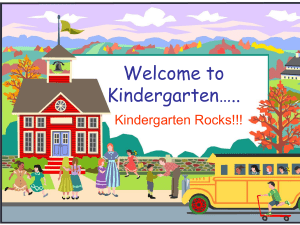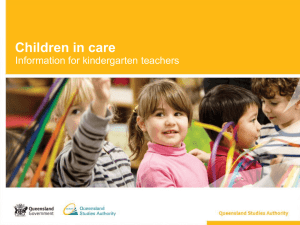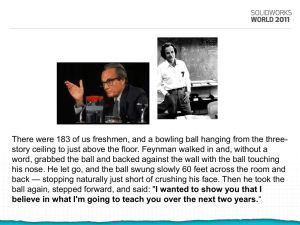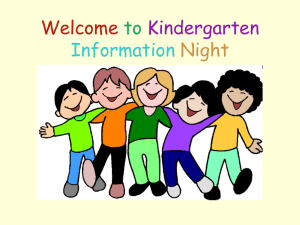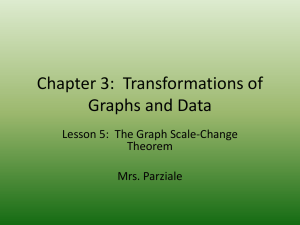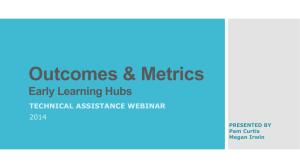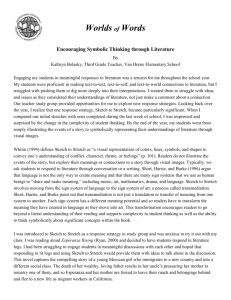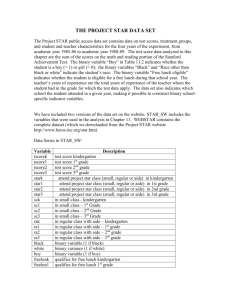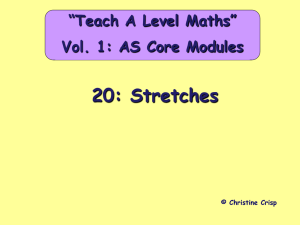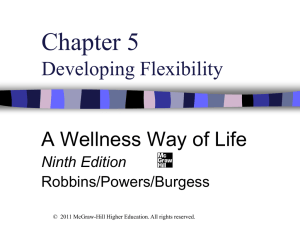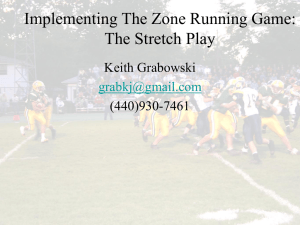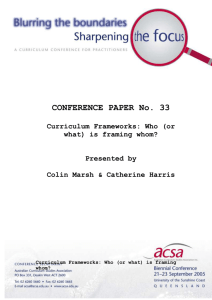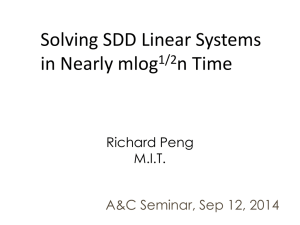St Joseph`s School, Walgett
advertisement
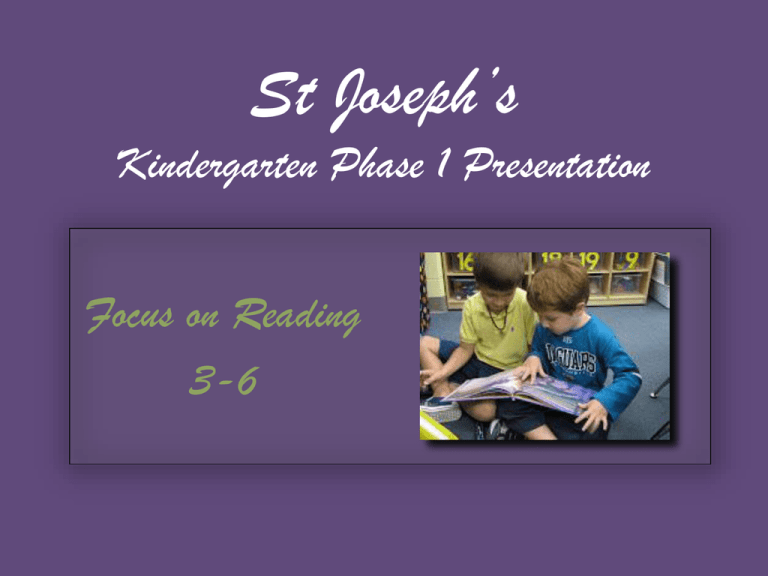
St Joseph’s Kindergarten Phase 1 Presentation Focus on Reading 3-6 Comprehension Teaching Strategies In Kindergarten over the past year and a half I have been working to introduce a few of the teaching strategies to the children through using Revisit, Reflect, Retell teaching ideas. The strategies I have introduced to Kindergarten are: Making Connections – when reading books we discuss if we have had similar things happen to us. Visualising – after reading a story children visualise pictures or parts of the book to draw or paint . Questioning - questioning is done on a daily basis in all KLAs. Ideas such as ‘The Story Star’ are used in guided reading and also with homework home readers. This idea is also implemented in other KLAs. Predicting – we regularly predict what will happen in a story this is used as a whole class and also during guided reading. Predicting is also used in other KLAs such as HSIE, Science and RE. Summarising - we regularly summarise what has happened in a story. Children also summarise what a partner has told them in ‘Thinking Partners’ Teaching Ideas Kindergarten has trialed a few teaching ideas from ‘Revisit, Reflect, Retell’, some of these ideas have worked and others have not. I have had to modify most ideas to cater for the age of my students. • Sketch to Stretch – is primarily used in English for reading groups and big books. The children have someone read half the book to them, they then draw a picture of what they think is going to happen in the rest of the story. The group then discusses what they think will happen, they continue reading the rest of the book and then discuss at the end whether their ideas had occurred in the book. • Alphaboxes – I attempted to use this last year and it was too difficult for the children. If I was to modify it again I would only use set letters (a-f, g-m, n-t, u-z). So as we read through a book we would be looking for words that begin with the letters a-f. •The Story Star – we ingrate ‘The Story Star’ in all our reading sessions and also with the children's home readers. The Story Star has been fantastic for getting the children talking about their book. The set questions cover the Who, What, Where, When, How and Why? Teaching Ideas •Storytelling with Props – we have used ‘Storytelling with props’ predominantly in English when reading a big book. The children create their own puppets and then act out a section of the story. The children really enjoy being given the opportunity to act out a story. The more we talk about and discuss book the more confident the children are becoming. The props give the children the extra confidence to participate actively. • My Partner Said… - we use ‘My partner said’ in conjunction with ‘Sketch to Stretch’. I have integrated this idea into HSIE and Science this term for our themed topics of Seasons and Materials. My Partner Said has provide the shy students in my class to opportunity to speak up in class, they are not worried they are going to say they wrong thing because they are giving someone else's opinion. Poggy Frog and the Cows Modified Posters Sketch to Stretch Teacher or helper reads to children a section of the book. When we reach the middle of the book we stop reading. After reading a selection, students draw sketches that illustrate key ideas and details. Students present their drawings to explain how they made connects with the information in the book. Children turn to a partner and discuss what they think will happen in the rest of the book. We continue reading the story. We discuss what the story was about and what we enjoyed. Modified Posters My Partner Said... ( Knee to Knee) Thinking together – children share ideas and opinions about what they have heard in the story. Reporting - Children report to the group about what their partner said. Children start with “My Partner Said...” Implementing Phase 2 Phase 2 has been implemented in our classroom in the following ways in Term 2 and they will continue to be implemented as the year progresses. •Literature circles - are used every morning as part of reading groups. The circles include; - Writing centre - Listening centre - Reading centre - Phonics centre - FOR centre (Sketch to Stretch) •Student Dictionary – We have created a student/classroom dictionary to write definitions of words we come across in our reading or themed units.

